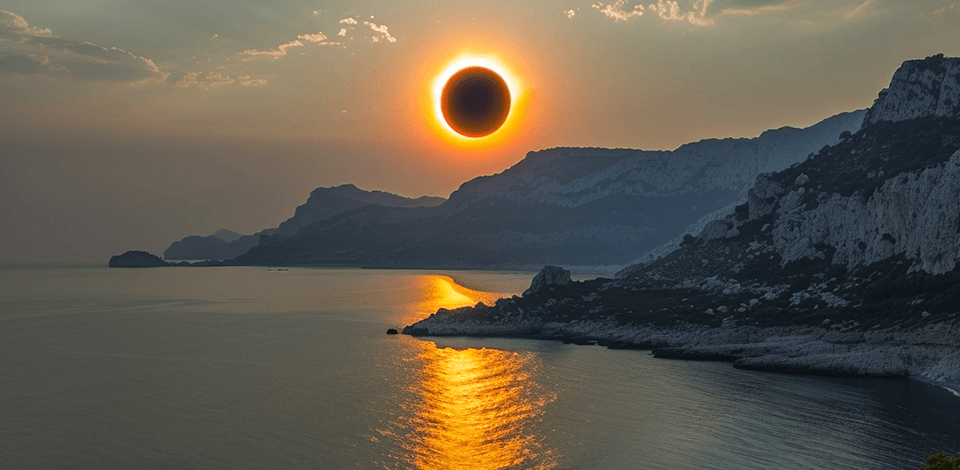
Capturing an eclipse and trying out these eclipse photo ideas can be a fun experience for photographers at any skill level. To make sure you get great shots, it's important to prepare well (like knowing about upcoming eclipses) and use smart techniques. Below, I'll share my experience to help make your eclipse pictures better.
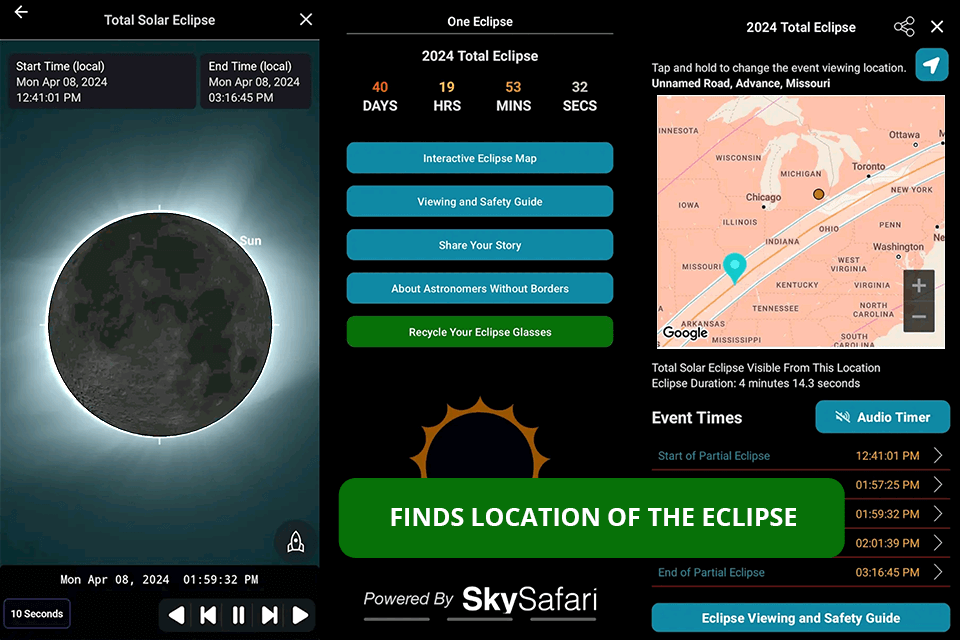
Before the event, find out the exact date, time, and location of the eclipse. Use websites like NASA or apps like One Eclipse to get accurate information.
Additionally, visit the spot before the eclipse. Make sure to check for clear horizons, any obstructions, and the best angles. It is also important to make sure that the place provides a good view and there is no light pollution.
When shooting at night, a DSLR or mirrorless camera with manual settings is the best choice. For instance, the Canon EOS 5D Mark IV has a quick and precise autofocus system, which is great for capturing the changing light during an eclipse. Its built-in image stabilization helps reduce camera shake, especially when using telephoto lenses to get a closer view of the eclipse.
A telephoto lens of 200mm or longer will allow you to capture detailed images.
Using a tripod, like the SmallRig CT210, is crucial for getting clear and stable eclipse photos. With the long exposure times needed for eclipse photography, even a tiny camera movement can cause blurry pictures. A tripod provides a stable base to keep your camera steady, reducing the chance of camera shake and ensuring sharp images.
I've prepared recommended camera settings for astrophotography for you. These settings are also good for shooting an eclipse and include aperture, shutter speed, ISO, and focus mode. You might need to adjust them depending on the eclipse phase and weather conditions. (These are the settings I usually use).
| Camera Setting | My Value | Overview |
|---|---|---|
|
Camera Mode |
Manual (M) |
Allows full control over exposure settings. |
|
Aperture |
f/8 - f/16 |
Use a smaller aperture for increased depth of field and sharper images. |
|
Shutter Speed |
1/1000s - 1/125s |
Adjust shutter speed based on the brightness of the sun or moon's phase. |
|
ISO |
ISO 100 - ISO 400 |
Use the lowest ISO possible to minimize noise in the images. |
|
Focus Mode |
Manual (MF) |
Set focus manually to ensure sharpness, especially during totality. |
|
Image Stabilization |
Turned Off |
If using a tripod, turn off image stabilization to avoid interference. |
|
White Balance |
Daylight (or Custom) |
Use daylight white balance setting or create a custom white balance if necessary. |
|
File Format |
RAW |
Take photos in RAW format to have more flexibility when editing them later. |
|
Metering Mode |
Spot or Center-weighted |
Use spot metering to measure exposure from the sun or moon's surface. |
|
Exposure Compensation |
0 (or adjust as needed) |
Use exposure compensation to fine-tune exposure if necessary. |
|
Long Exposure Noise Reduction |
Off |
Disable this feature to avoid delays between shots during multiple exposures. |
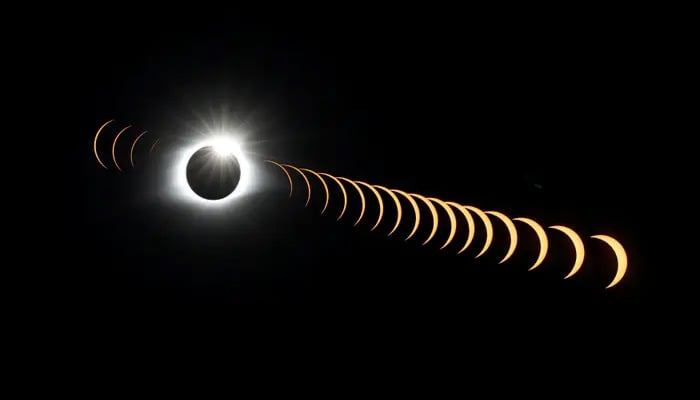
Take pictures of the entire eclipse from beginning to end using a time-lapse sequence. Put your camera on a stand and snap photos regularly throughout the eclipse. Then, combine the images into a time-lapse video to show the moon or sun moving across the sky, creating an amazing visual effect. This is a great eclipse photo idea.
Pro tip: My Canon camera has intervalometer features for capturing time-lapse sequences directly. Alternatively, you can use time-lapse apps like Lapse It, which lets you capture time-lapse sequences with your smartphone or import photos taken with a DSLR.

Choose a scenic location with interesting foreground elements like trees, buildings, or landmarks. Position yourself so that the eclipse occurs behind these objects, creating a dramatic silhouette effect.

Get close-up shots of the eclipse using a telephoto lens or a telescope with a solar filter. Zoom in on details like sunspots, prominences, or the lunar surface during a lunar eclipse. Focus on capturing fine details and textures to showcase the celestial beauty of the eclipse up close.

Photograph the solar eclipse reflected in calm bodies of water, like lakes, rivers, or ponds. To do this, find a spot with still water to get clear reflections of the moon or sun during the eclipse. Also, try different angles and perspectives to create captivating mirror-like images that enhance the eclipse's visual impact.
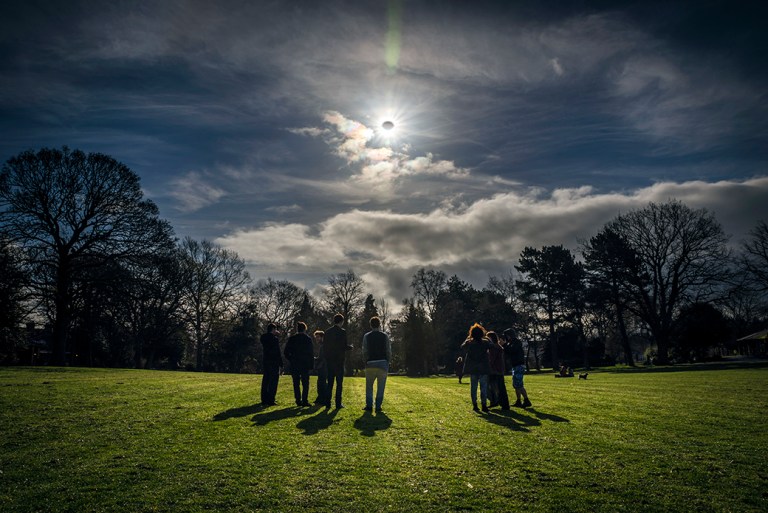
Include people in your eclipse photos to show scale, context, and human interest. Capture images of viewers watching the eclipse or feature silhouetted figures against the backdrop of the eclipse. This will help express the awe and wonder that this celestial event inspires.
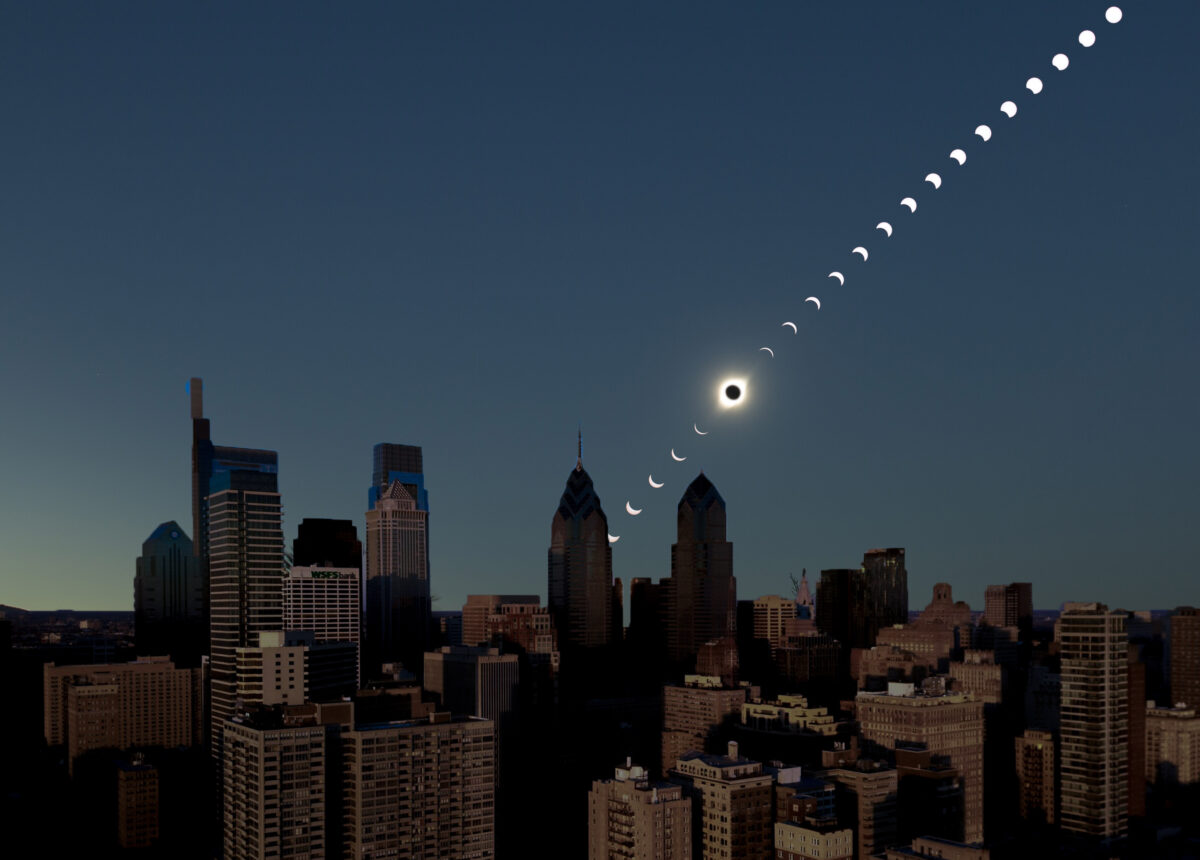
Look for cities with modern buildings made of glass or tall buildings. Take pictures of the eclipse reflected in the glass or on the buildings' surfaces to mix natural and man-made things creatively.
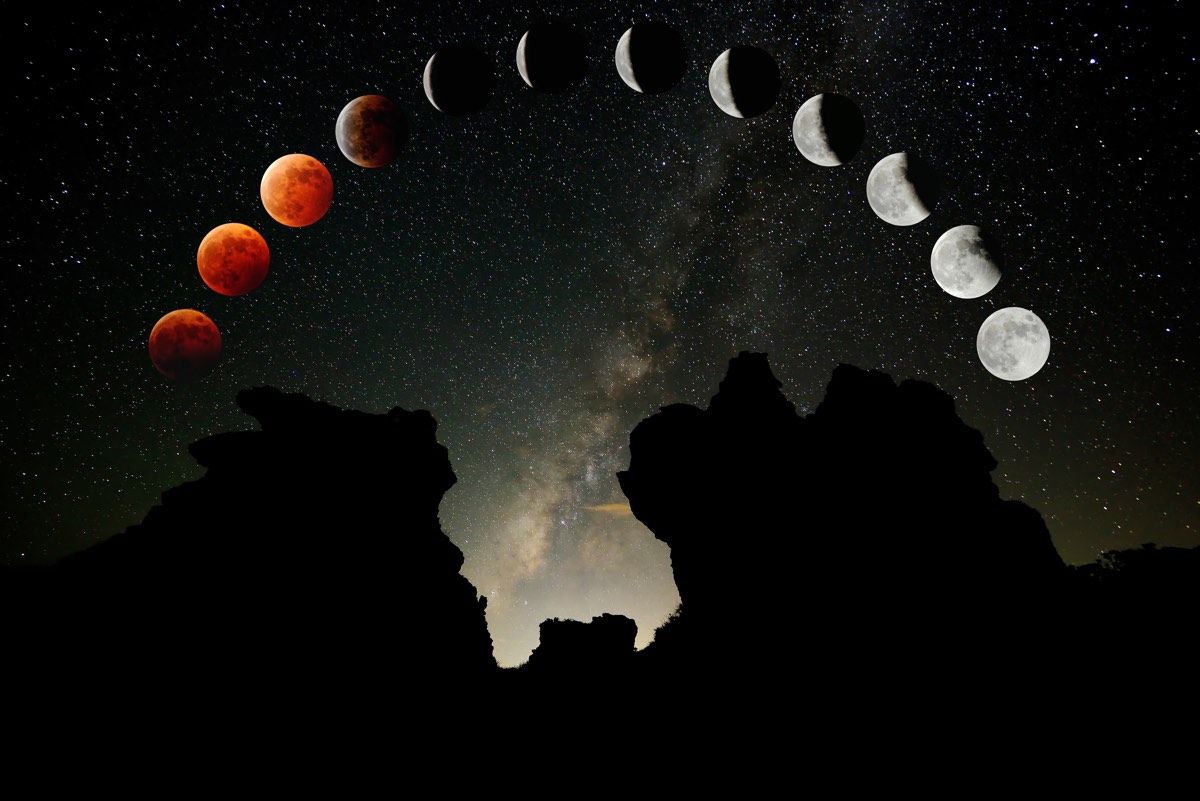
Take a picture that mixes different photos of the eclipse taken at different times. Begin with a regular photo of the landscape or sky without the eclipse. Then, add darker photos as the eclipse moves on. Mix them to show the whole eclipse event in one amazing picture.
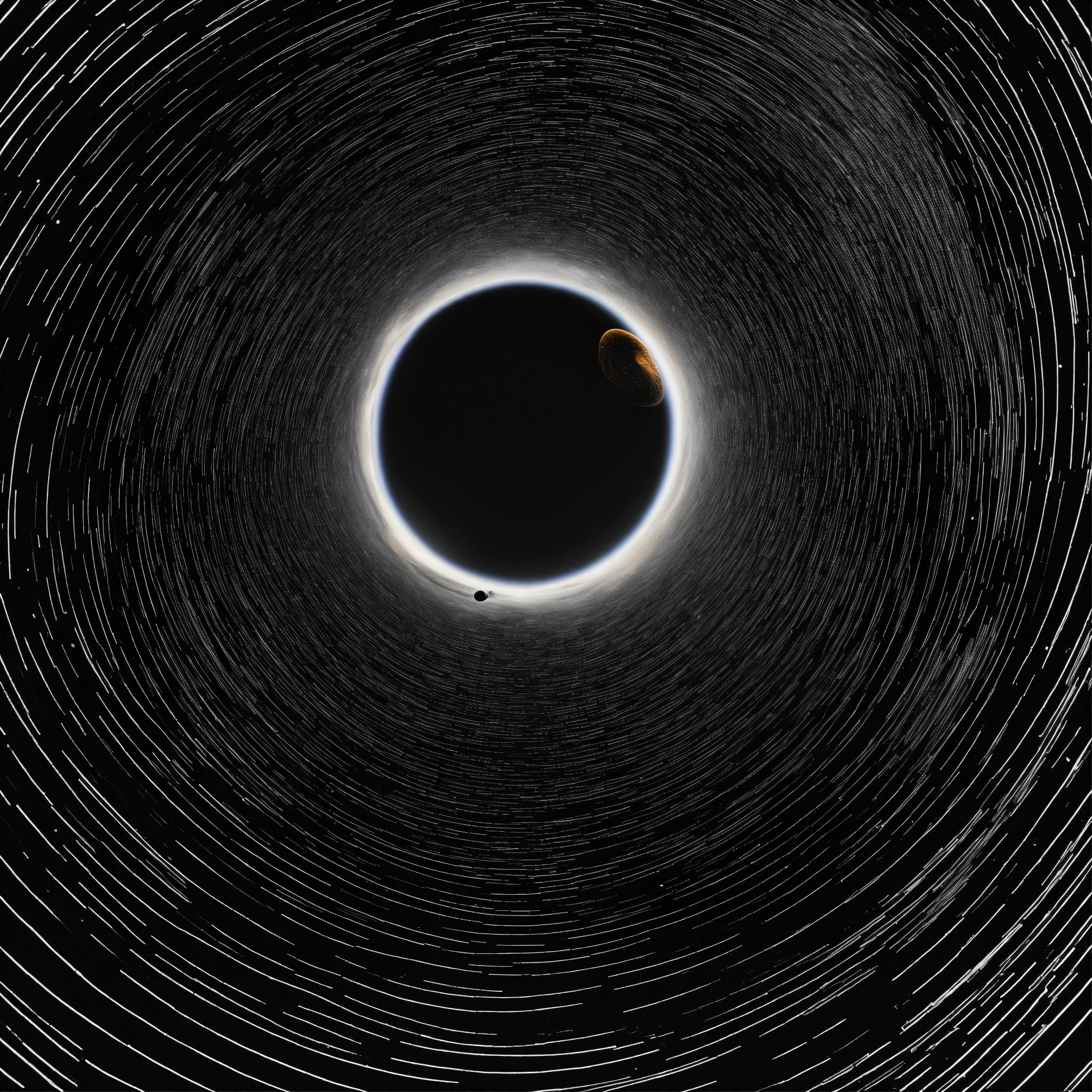
To create a beautiful celestial panorama, blend the eclipse with long-exposure star trail photography. For this night photo idea, place your camera on a tripod and capture a sequence of long-exposure photos showing both the eclipse and the nighttime sky. As the Earth moves, the stars will create streaks of light around the eclipsed moon or sun, giving your pictures a surreal touch.

For this eclipse photo idea, capture a panoramic view of the eclipse to include the wide sky and surrounding landscape. Use a wide-angle lens or take several overlapping photos and merge them to make a panoramic image.
Over the next few years, people around the world will be able to see several important eclipses. This table gives detailed information about the upcoming solar and lunar eclipses from 2025 to 2026. It includes the dates, types of eclipses, and the areas where they can be seen. Whether you're a dedicated eclipse watcher or just curious, this guide will help you plan to see these amazing events.
|
2024 |
|
|
|
17-18 September |
Lunar (Partial) |
Europe, Much of Asia, Africa, North America, South America, Pacific, Atlantic, Indian Ocean, Arctic, Antarctica |
|
2 October |
Solar (Annular) |
South in North America, Much of South America, Pacific, Atlantic, Antarctica |
|
2025 |
|
|
|
13-14 March |
Lunar (Total) |
Europe, Much of Asia, Much of Australia, Much of Africa, North America, South America, Pacific, Atlantic, Arctic, Antarctica |
|
29 March |
Solar (Partial) |
Europe, North in Asia, North/West Africa, Much of North America, North in South America, Atlantic, Arctic |
|
7-8 September |
Lunar (Total) |
Europe, Asia, Australia, Africa, West in North America, East in South America, Pacific, Atlantic, Indian Ocean, Arctic, Antarctica |
|
21 September |
Solar (Partial) |
South in Australia, Pacific, Atlantic, Antarctica |
|
2026 |
|
|
|
17 February |
Solar (Annular) |
Africa's south, South America, the Pacific, Atlantic, Indian Ocean, and Antarctica. |
|
2-3 March |
Lunar (Total) |
East in Europe, Asia, Australia, North America, South America, Pacific, Atlantic, Indian Ocean, Arctic, Antarctica |
|
12 August |
Solar (Total) |
Europe, North in Asia, North/West Africa, Much of North America, Pacific, Atlantic, Arctic |
|
27-28 August |
Lunar (Partial) |
Europe, West in Asia, Africa, North America, South America, Pacific, Atlantic, Indian Ocean, Antarctica |

Our retouchers at FixThePhoto offer thousands of free tools to help you edit eclipse photos more efficiently. These filters are made to help you adjust the lighting, shadows, colors, and contrast in your pictures.